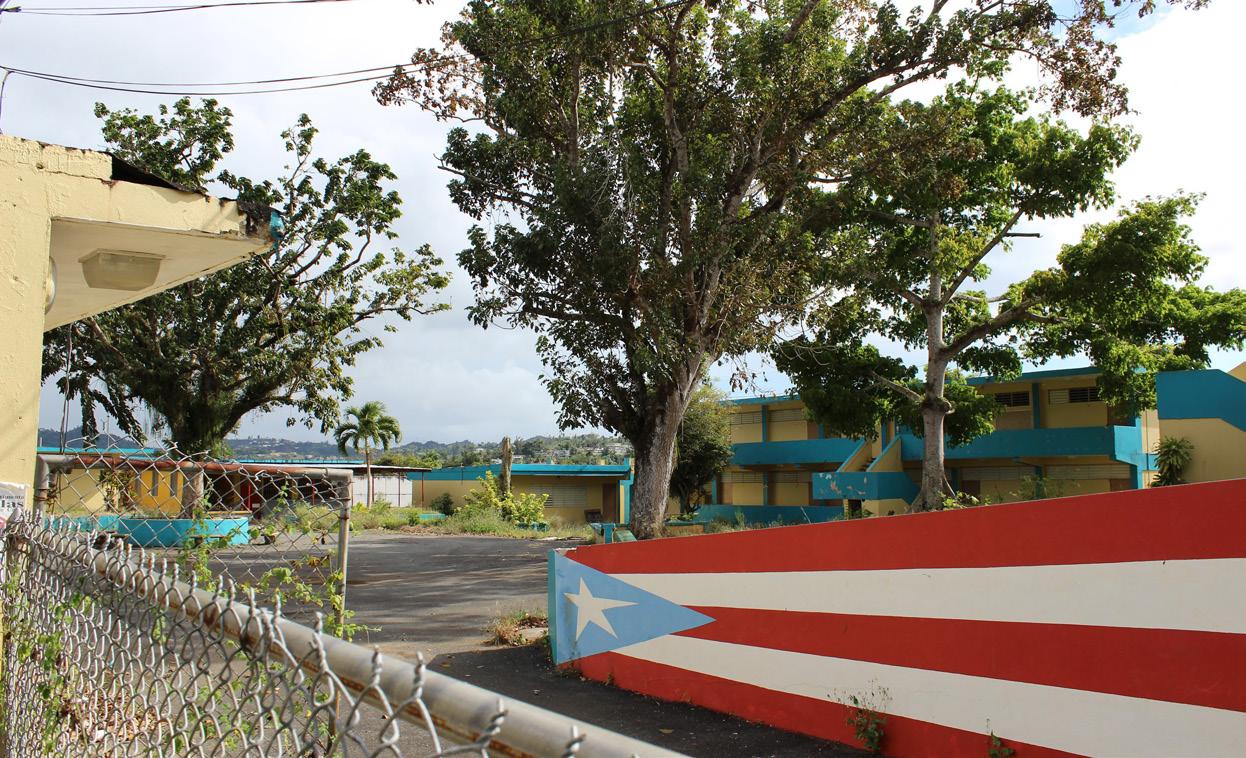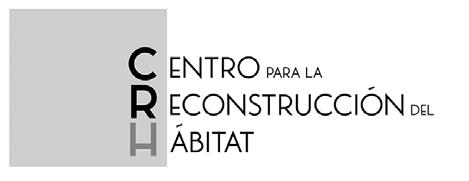
7 minute read
Privatization of the Education System
savings.70 Our research into contracts has demonstrated a significant number of for-profit firms participating in school sales, many of which have holdings in other areas of real estate. Former secretary of education Julia Keleher is also currently facing federal charges in part for the granting of school property to a private developer for $1 in exchange for an apartment in a high-cost condominium.71
A handful of schools were recipients of public funding for renovations, infrastructure improvements, and new recreation facilities shortly before their closing. Some abandoned schools still have signs on them announcing public investment or its adoption by a particular agency. In said cases, austerity measures have proven to lead to the loss of previous investments. Similarly, one audit of 84 closed schools in the Humacao region demonstrated that electric and water connections had not been cut, even after a year, resulting in $167,747 in losses, between August 2017 and September 2018.72
School closures produce few savings and are an insignificant source of revenue for Puerto Rico. While they do not provide significant revenue, school closures do generate substantial and cascading costs that disadvantage the health, democratic participation, and well-being of students, families, neighborhoods, and the archipelago as a whole.
By many accounts, Puerto Rico’s public schools were not excelling before the closures due to the history of disinvestment. One community leader stated plainly, “everyone who can afford it sends their kids to private schools.” Educators and parents alike fear that one of the hidden reasons for the closures is to facilitate a transition to a system that privatizes education, much like what has transpired in mainland US cities with high rates of school closures.73 In 2018, just six months after the hurricanes, former Governor Roselló adopted a law allowing for charters as well as vouchers for private schools.74 The 2018 Educational Reform Act, which created a school voucher system so that vouchers can be used for intradistrict public school choice or private schools, allowed for the creation of charter schools and included a salary increase for teachers.75 Months later, Frank Brogan, US Assistant Secretary for Elementary and Secondary Education, praised Puerto Rico for paving the way for charter schools.76 Some local leaders suspect that the school closures accomplish a consolidation of students into larger schools that will be more profitable for future private and charter school companies.
These concerns are warranted. Of the 113 school buildings that were leased from 2014 to 2019, 14 are now private or for-profit schools, and over onethird of these new schools (five) are now Christian academies. For example, José Andino y Amezquita school in Bayamón was closed at the end of the 2017 school year. In December 2017, it was leased to High Achievement Christian School, a for-profit limited liability company, for $1 per month to run a Christian school (prekindergarten through high school) on the site. This conversion, along with the other 13 formerly public now private schools, evidence the privatization of the public education system. Schools are contracted to other entities, including Christian or religious institutions, to operate and run private schools. Because these new schools are not public, they can have selective enrollment and further exacerbate educational inequities and social inequalities in Puerto Rico.
School privatization—also referred to as “market-based education reform”—is often depicted as the optimal solution for improving “struggling” school districts as well as a civil rights action, providing people of color and marginalized communities access to the promises of the free market.77 As the ground is laid for the privatization of the school system in Puerto Rico, with austerity and debt obligations used as pretext, it is important to understand the ways in which market-based reform is not as promising as many prominent claims make it out to be.
Privatization reform is generally described as bringing market principles to a bureaucratic and inflexible system.78 The argument is that free choice is necessary to bring competition and efficiency to education where the public sector has allowed schools to fail because of unresponsive operations and overreaching teachers’
unions. However, this framing ignores the histories and current realities of race- and class-based structural disadvantages. Instead of confronting these structural issues and putting resources into uprooting them, the market reform proposal ignores these realities in its enthusiasm for free market solutions. This approach further entrenches inequities as it intensively favors those who have access to greater financial resources. Because these dynamics are ignored, schools that are struggling because of structural reasons will be thought of as failing to compete in the market. Much like with the 2002 No Child Left Behind Act, high-performing schools will be rewarded through additional funding (supposedly to encourage competition), and the structurally disadvantaged schools will fall further behind. This is especially the case as curriculums are stripped to focus on test
scores, and extracurricular programs are eliminated to reduce costs.79
While market-based reform is presented as beneficial to students in “failing” public systems, many of the organizations that operate charter schools are for-profit companies, which means they need to find a way to have a profitable revenue stream. As many of these schools receive funding based on standardized test performance, a lot of schools will find ways to exclude students that they think may drag test scores down, as opposed to dedicating resources to helping all children reach their maximum potential and flourish academically.80 Many of the people who run the organizations that operate charters are politically connected and win contracts based on those connections.81 Clear evidence of this practice exists in Puerto Rico with another set of corruption charges against former secretary of education Julia Keleher; in 2019, she was arrested for her role in a fraud and money laundering scheme where she inappropriately funneled contracts to people with whom she had personal connections.82 In these ways, the private for-profit interests benefit financially on the backs of students who deserve a robust and fair educational experience.
LEFT The Luis T. Baliñas school in Aguas Buenas, shortly after its closing.
BELOW After closing, the Luis T. Baliñas school of Aguas Buenas, now demolished, has been sold to private developers.

6. Conclusion and Recommendations
Conclusion
Public schools, particularly in Puerto Rico, are bedrocks for the communities they serve. They provide a place for intergenerational learning, access to food, social networks, a place for voting, shelter during extreme weather, and other essential functions that go beyond being solely a place of education for students. Public education itself also creates public benefits, which are enjoyed by many more people than the person directly receiving the education.83 But when education is thought of as a market commodity, it is treated as an individual private product detached from these essential benefits. Additionally, when slots in charter schools are limited and private schools have selective enrollment, families are put in competition with one another, despite the fact that education is a constitutional right.
Consecutive waves of mass school closures in Puerto Rico have proven detrimental for students, parents, and whole communities. The alleged justifications and benefits of school closures has also been misleading and misinformed, given the lack of evidence that it has improved education or public finances. However, in the rare case that a school closure is needed or inevitable, there ought to be deep improvements to decision-making, communication, and collaborative planning to assure that risks and negative impacts to surrounding communities are understood and mitigated.
According to John B. King, former US secretary of education, the Puerto Rico educational system “has long suffered from a lack of investment, and the consequences of that lack of investment are lack of opportunity for students.” In this sense, the school closures and austerity policies can be seen as a continuation of, not a break from, the past. Educational policy and the planned reuse of closed schools must be an integral part of responding to population loss, public debt, and a struggling education system. Solutions must begin with a framework that understands community schools as essential public assets that are anchors for community-driven local and regional equitable development. Building high-quality community-controlled schools should be placed at the center of long-term strategies to reduce poverty and increase resilience. Ultimately, investing in public schools must be seen as a way to reverse economic distress, bring families back to the archipelago, and support the development of young people into future leaders and professionals committed to advancing grounded solutions that can contribute to the prosperity of their communities.
The overall reduction in student populations can generate creative approaches, including creating public Montessori schools. For example, there are now 45 public Montessori schools serving 14,000 students in Puerto Rico, the largest and fastest growing public Montessori project in the US.84 Although 14 public Montessori schools were listed to be closed by the DE, community advocacy by students and families managed to prevent every single planned closure. The “Puerto Rico Model,” as it’s become known, is a unique combination of the public access and governance of a public school with the program design and curriculum based on the Montessori approach.
Education is not the only area where community members are organizing and advancing bold visions that will transform public systems to resolve major problems. Puerto Rican leaders have developed plans to convert the territory’s energy system to 100 percent renewable,85 resolve widespread property title issues without displacing residents,86 and innovate




